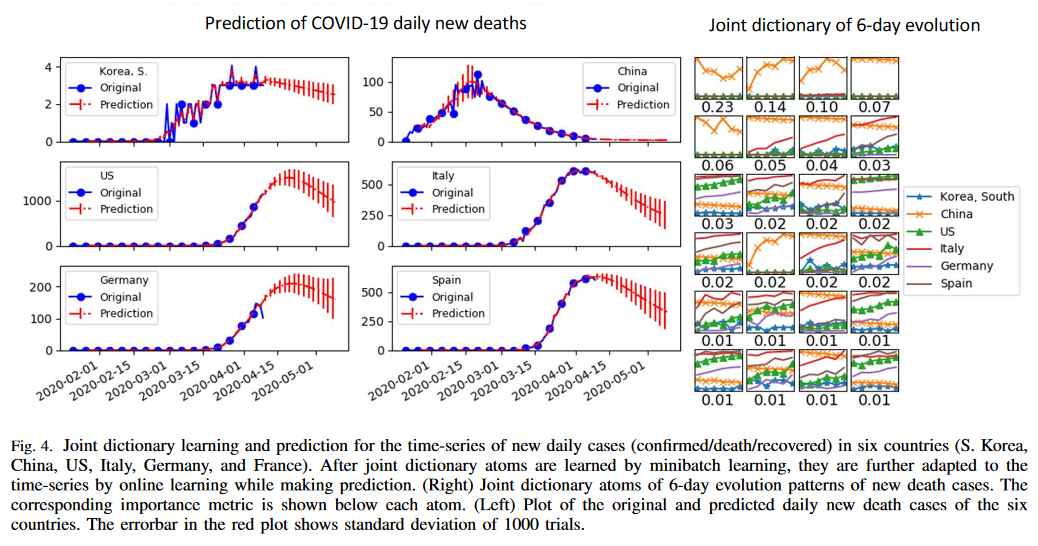COVID-19 Time-series Prediction by Joint Dictionary Learning and Online NMF
Predicting the spread and containment of COVID-19 is a challenge of utmost importance that the broader scientific community is currently facing. One of the main sources of difficulty is that a very limited amount of daily COVID-19 case data is available, and with few exceptions, the majority of countries are currently in the "exponential spread stage," and thus there is scarce information available which would enable one to predict the phase transition between spread and containment. In this paper, we propose a novel approach to predicting the spread of COVID-19 based on dictionary learning and online nonnegative matrix factorization (online NMF). The key idea is to learn dictionary patterns of short evolution instances of the new daily cases in multiple countries at the same time, so that their latent correlation structures are captured in the dictionary patterns. We first learn such patterns by minibatch learning from the entire time-series and then further adapt them to the time-series by online NMF. As we progressively adapt and improve the learned dictionary patterns to the more recent observations, we also use them to make one-step predictions by the partial fitting. Lastly, by recursively applying the one-step predictions, we can extrapolate our predictions into the near future. Our prediction results can be directly attributed to the learned dictionary patterns due to their interpretability.
PDF Abstract

